Mitsubishi ASX review and buyer's guide
The ASX is a small SUV for a budget conscious buyers who need excellent value, good equipment levels and enough space to get all the small jobs done. ASX won’t do everything, but it’ll certainly do its fair share of family duties.
The Mitsubishi ASX is an affordable, frugal and compact SUV with just enough room for the essentials and the kids, without blowing the budget.
It offers good value and just enough of the features you might expect of a modern-day family hatchback, but with the added capability of a slightly higher undercarriage.
The ASX isn’t perfect, but for the price, you’re probably not going to care much. Nor that it shares (for the second time) a platform and even front-end styling cues with the Renault Captur.
This is the result of the global Renault-Nissan-Mitsubishi Alliance which began in 2016 and saw the second-generation ASX shared across Nissan and Renault models. The first generation ASX debuted back in 2011 and with the second-gen arriving in 2016, it was definitely high-time for a new model.
The new ASX remains the affordable 5-seat small SUV option if budget restraints pertain and you’d prefer to deal with the Mitsubishi brand in Australia rather than the turbulent brand presence that is Renault or the ambivalent customer support of Nissan Australia.
ASX is a good option if you want that slightly easier SUV ingress/egress than something like a hatchback or micro/city car. But having said that, the ASX isn’t exactly a high-rider. You might also want the additional centimetres of ground clearance over a conventional hatchback, in which case the ASX is a safe, affordable option.
While it is a misconception that small SUVs offer you more space than a conventional hatchback, it’s also quite okay to want something that is as small, but that won’t scuff on shopping centre parking buffers, streetside kerbs or just the driveway at home. It makes sense.
An ASX makes sense if you need that slightly higher ground clearance - a difference of millimetres - and having an excess of cargo and legroom isn’t your top priority. Sometimes ‘just enough’ is exactly what you want to pay for.
The Mitsubishi ASX competes in the small SUV segment with the Hyundai Kona or Venue, Kia Seltos, Subaru Crosstrek, Mazda CX-3 and Toyota C-HR >>. All have strong features lists and excellent customer service at a brand and dealer level.
But the ASX is no longer one of the oldest vehicles in this company, unlike its predecessor. The Mazda CX-3 started life as a Mazda 2 roughly 10 years ago, for example, so the new ASX makes it instantly look aged. A lot has changed since the late 2000s when the original ASX and the original Mazda 2 were first designed. So if you’re looking for in a modern small SUV with safety and technology that was never available in the planning for first-generation ASX, this new version could be just what you need.
New ASX gets the latest suite of autonomous emergency braking software, in both forward and reverse, which means it keeps up with late ANCAP safety rating changes and the rest of the mainstream small SUV cohort.
But what’s truly interesting about the new version is the size. Not because it’s increased marginally over the old model, but because it’s actually been reduced. This is completely at-odds with the trend in the car industry in the last 20 years which has seen model after model get bigger and bigger in every direction with every passing iteration change.
ASX, as based on the Renault Captur dimensions, is now 4227mm long: a reduction of about 138mm from the 4365mm from its predecessor. ASX is also 31mm shorter in the wheelbase, according to Euro-spec Renault Captur, at 2639mm - which translates into a 1 per cent reduction.
It also seems like the ground clearance has been reduced from 205mm in the old ASX to, according to specifications of Euro-spec Renault Captur, about 169mm. If this 17 per cent reduction in ride height turns out to be accurate (full Australian specifications to be confirmed), then it represents a 17 per cent reduction in the purpose for buying a small SUV like ASX in the first place.
If you’re ready to buy an ASX, click on the button below. But if you need a greater insight, let’s dissect the ASX range and help you figure out if it’s compatible with your driving requirements.
FEATURES AND PRICING
The ASX range is basic to understand, which is a welcome change to the old model.
The ASX has 3 model grades - the LS, the Aspire and the Exceed.
With so much equipment coming standard on most new cars these days, in the case of ASX it’s a question of how many of these features you need versus which ones you want, depending on how you plan to use the vehicle.
Here’s a list of what you get with each model grade:
ASX LS | $37,750 approx. driveaway
includes:
10.4-inch Smartphone-link Display Audio (SDA)
Combination meter cluster with 7-inch display
17-inch alloy wheels
Electrically adjustable, heated door mirrors
Centre console with armrest
Manual dimming rear-view mirror
Cloth seats (textile black and grey)
Height-adjustable driver seat
Soft-touch steering wheel
Vanity mirrors for driver and front passenger
Instrument panel decoration – silver paint
Cruise control with speed limiter
Eco drive mode
Rear parking sensors
Climate control air conditioning
Paddle shift
Smart card
Electric parking brake with auto hold
Dusk-sensing headlamps, rain-sensing wipers
Rear view camera
‘Safety Assist’ features: driver attention alert, emergency lane assist, forward collision mitigation, lane departure warning & prevention, safe distance warning
ASX ASPIRE | $42,700 approx. driveaway
adds:
10.4-inch Smartphone-link Display Audio (SDA) with embedded navigation and Google built-in, incl: Google Assistant, Google Maps, Google Play
Full TFT combination meter cluster with 10-inch display
18-inch alloy wheels
Privacy glass
Electric folding door mirrors
Floating front console with e-shifter
Ambient interior lighting
Auto-dimming rear-view mirror
Cloth seats (grey)
Height-adjustable driver and passenger seat
Heated steering wheel
Illuminated vanity mirror (driver and passenger)
Wireless charging
Instrument panel decoration – gloss black
Drive modes, including:
Eco, Comfort, Sport and ‘Perso’ – the latter enables personalisation of steering, ESP, engine responsiveness, interior lighting and instrument panel/multimedia screen settings
Front, rear and side parking sensors
Lane Keep Assist (LKA)
Adaptive Cruise Control (ACC)
Traffic Jam Assist (TJA)
Mi-Pilot (Semi-autonomous driving: LKA + ACC + TJA) - keeps vehicle centred in lane and is capable of fully stopping the vehicle
Blind Spot Warning (BSW)
Rear Cross Traffic Alert (RCTA)
Safe Exit Assist (SEA)
ASX Exceed | $46,500 approx. driveaway
adds:
Panoramic sunroof
Two-tone exterior paint
Frameless auto dimming rear view mirror
Instrument panel decoration – velvet granite paint
Leather seats (black)
Heated front seats
Power driver seat
ENGINE
Two petrol engines, negligible difference in performance. They’re both four-cylinder petrol engines with multi-point fuel injection, both generating their peak power at 6000rpm - either 110kW (and 197Nm of torque) from the 2.0-litre or 123kW (and 220Nm) from the 2.4. ‘Multi-point’ basically just means it’s tuned for fuel economy, not performance.
Both engines only ask from 91 octane fuel (not that rip-off premium stuff), and a CVT automatic transmission driving the front wheels only. That’s right, there’s no all-wheel drive option for ASX, unlike the Subaru Crosstrek’s symmetrical all-wheel drive system which would be ideal if you live in hilly, rural areas where bitumen isn’t always the primary road type.
There are also on-demand AWD powertrains in the Mazda CX-3, Hyundai Kona and Kia Seltos if you want a more reactive system which waits for traction loss before engaging drive to the rear. This is generally all you need for city driving, but AWD can be useful on steep slopes, in the wet, when visiting regional backroads or touring around.
However, Mitsubishi continues to stick by front-wheel drive, and it’s smart. Very rarely do you ever actually need all-wheel drive to engage in on-demand systems. And usually that happens because of an over-zealous accelerator pedal input on a compromised road surface like wet, with a chance of meatballs. Or something similar.
If you’re going to go all-wheel drive, do it properly and get permanent AWD in the Subaru, otherwise, it’s a bit of a cash throwaway. Or you could look at the Mitsubishi Eclipse Cross - more on that shortly.
I'll help you save thousands on a new Mitsubishi ASX here
Just fill in this form.
No more car dealership rip-offs.
Greater transparency.
Less stress.
TRANSMISSION
Not offering an on-demand all-wheel drive system for the ASX is, in my view, a curious decision. AWD just has to be better, right? Not necessarily >>
Yes it adds cost, both in R&D, and in parts/servicing, but leaving a front-drive layout the only option against strong-selling rivals like Mazda CX-3, Toyota C-HR and especially the Subaru Crosstrek, could be seen as a lost opportunity.
If you must have a small SUV from Mitsubishi, you can consider the Eclipse Cross LS (AWD) at around $35k. So you can see the sales strategy here - all-wheel drive is being sold as a premium alternative - which takes pits the Eclipse Cross against the formidable Subaru XV’s all-wheel drive system, starting $2k cheaper than the Mitsubishi.
Considering the ASX Exceed is asking $35,000 and the Eclipse Cross LS starts at that price, it seems counter-intuitive, or at the very least, puzzling to force the customer to go without safety tech (blind-spot monitoring, lane-change assist, rear cross-traffic alert) by going mid-spec Eclipse Cross just to get have AWD.
Why wouldn’t you spend the R&D budget by making AWD an option on the ASX? You can leave the clever, if unfortunately named, Super-All-wheel Control stuff (as found on the hairy-chested Pajero Sport) for the supposedly premium Eclipse Cross, but that means you have two AWD options against the mighty Subaru Crosstrek, and other on-demand competitors.
DRIVING
ASX is nimble thanks to its light overall kerb weight, its low centre of gravity and it also sips fuel as a result - but so do its rivals.
It’ll weave in and out of city centres with high bluestone kerbs and sharp concrete carpark barriers, it’s going to slip under the shopping centre and apartment overheight barriers with ease and you’ll never have to worry about squeezing through back alleys.
Ground clearance is a surprisingly important aspect to consider when buying a small SUV because you’re paying a premium for it, compared with a regular hatchback car. So having the most against its rivals would be an advantage for whichever small SUV is the leader.
The ASX, unfortunately, is not the best on ground clearance. That title among the main group of small SUVs goes to the Subaru Crosstrek with 220mm. ASX comes in second at 205mm, more than the 170mm on Hyundai Kona and Kia Seltos, and the belly-rubbing Mazda CX-3 at 160mm.
On freeways the tyre roar is noticeable but not intolerable, and the CVT is good for smooth if-peaky overtakes. Over bumps at lower speeds the ASX is okay without being great, while higher speed dips and expansion joints in bridges will be felt in your butt, but then it doesn’t have an Australian suspension tune like the KiaSeltos or Hyundai Kona.
But you do save thousands of dollars, so you get what you pay for.
INTERIOR
The ASX interior has long needed updating because previously you felt a bit like leftovers in a Tuppaware container. Fortunately, the semi-premium interior on the GSR helps the cause. The ho-hum face has been replaced by a much more striking greeting, which makes it look a bit more grown up like its bigger siblings like the also-updated, much bigger Outlander.
There is also no tyre pressure monitoring on any ASX variant despite being available on the European market model, nor even any Eclipse Cross variant sold locally, despite cracking a $43 grand ceiling.
What you get is a 360-degree camera system, which to me seems like less of a priority than helping millennials with the basic responsibility of keeping their tyres safely and adequately inflated.
If you still can’t park with sensors, reversing camera and mirrors, perhaps there’s a bigger problem going on here.
Regardless of which trim level you get, the design is going to take you back to simpler times because that’s when the ASX was last given an ‘update’. It’s five seats of mediocre accommodation which in many cases might be just what your kids or your elderly mother are looking for - nothing flashy, but a functional, practical and low-key vehicle to sit in and drive.
Safety and distraction conscientious parents will appreciate the touchscreen buttons that are dead easy to hit while you’re driving because they’re big icons, with lots of area, and clear labelling. And the screen is modest in size too. It absolutely looks and presents like a functional tool rather than a bright, showy centrepiece.
There are buttons to turn things on and off, dials to adjust things higher or lower, and an actual adult can access the USB ports without requiring a child to reach their tiny hands deep into the dark recesses of the transmission tunnel simply to charge your phone.
The Competition
Let’s compare the highest grade versions of the four main rivals to Hyundai Venue, all in turbocharged petrol, all-wheel drive (albeit on-demand) and with all the fruit their respective masters can adorn them with. Here’s how to buy the right SUV >>
Kia Seltos GT-Line: Locally tuned suspension, a full-sized spare, a big infotainment screen, live traffic and 10 years of free map updates, more luggage space than most rivals (rear seats up or down), tyre pressure monitoring (like Venue) make Seltos a strong option. Lagging CVT gear changes are a chink in its armour, however. Get’s same feisty 1.6 turbo petrol engine as Venue, but with more power. More conservative - perhaps, less aggressive - styling might be easier on the eyes. Full size spare for those who prefer safety over minimalism. However, you’ll pay a $10k premium over the Venue. Get the full Seltos guide here >>
Toyota C-HR Kobe: I try to avoid commenting on aesthetics because, you have eyes and can interpret design for yourself, but C-HR is undoubtedly the pug of the litter. Drives nice enough and boot space is decent for the category, engine feels mediocre up suburban hills but adequate on flatter roads and highways, especially the heavy hybrid weighing 1590kg (kerb). C-HR is the only option for a hybrid model, but you’ll pay $40k for that privilege and it demands premium fuel. Should you buy a Hybrid SUV? >>
Mazda CX-3 Akari: CX-3 is the city dweller’s slick, sexy laneway ally. It’s petrol-only and you will find CX-3 one of the nicest to drive in the group, and one of the best equipped in Akari top-spec. But you’ll pay another $10k more for features like Nappa leather, AWD, electronic park brake, 360-degree camera, traffic signal recognition, adaptive cruise control, heated front seats etc. Here’s why the CX-3 makes sense >>
Hyundai Venue: The range starts at $20k and stops before $30k. If that’s not value for money, I’m a Rastafarian. Not only do you get Apple CarPlay and Android Auto standard, rightly so in 2020, so too is a reversing camera, and tyre pressure monitoring so the offspring can take responsibility for their own safety and save you having to replace their prematurely balding tyres (which is highly recommended because they’re already very skinny). Also offers a zippy 1.6-litre petrol engine, with a conventional automatic, and a colour palette inspired by Cheshire Cat. Learn more about Hyundai Venue >>
DRAWBACKS
All-wheel drive
If you’re looking for a small, economical and capable SUV offering all the bells and whistles, but you’re tempted to get an ASX and to do it what the Subaru Crosstrek is capable of, by taking your SUV off the bitumen, first know this >>
Secondly, the ASX is an urban-focussed runabout for day-to-day use in the concrete jungle - it does not have the same clever traction control computer systems controlling the Crosstrek in slippery, muddy or low-traction conditions. You might also want to consider sticking with a normal car >>
Think about what you’re actually likely to do with your small SUV and ask yourself if it’s likely you’re ever going to encounter a dusty backroad. If the chances are slim-to-none, then the ASX will do just fine.
If you need something compact and capable in rural environments, the Crosstrek should be on your shortlist.
It’s arguably got the best CVT transmission on the market with a grunty boxer engine and excellent safety credentials.
You don’t have to have an orange one, but the more extroverted among you will appreciate a um…vivid colour palette.
That’s not to say the ASX is useless beside the Crosstrek, because the Subaru has an utterly tiny boot cavity: just 310 litres with the rear seats up). The ASX gives you 393 litres in the same seating arrangement. Drop the rear pews and it’s the same story. Subaru: 765 litres, ASX: 1143 litres. ASX might be outgunned when it comes to non-bitumen driving and let’s face it, there’s plenty of dirt roads in Australia, but the Crosstrek’s functionality as a shopping hauler is in the shade compared with ASX.
Also worth noting is the AWD Eclipse Cross only offers 374 litres of boot space, right in the middle of ASX and Crosstrek. The Subaru also doesn’t offer its full safety suite, including lane-change assist, reverse auto-braking, blind-spot and rear cross-traffic alert, until the $40k 2.0i-S. Although, there is no adaptive cruise control on the ASX, keep in mind, and that’s a major deficit because it’s by-far the more useful of all the so-called collision avoidance features you’ll actually benefit from.
You do still get autonomous emergency braking and adaptive cruise in the Crosstrek from a cheaper $31k price-point than the ASX however, and the Subaru offers 1400kg of braked towing capacity (versus 1300kg in ASX), just in case that’s one of your need-to-haves. Tyre pressure monitoring is also standard on Crosstrek, unfortunately so too is a space-saver spare, but you can’t have everything.
Put simply, the Crosstrek’s X-Mode and AWD will take you through driving scenarios the ASX would be completely outclassed and you can have the more important collision avoidance tech at a more competitive pricepoint than the ASX if performance and capability are what you need. If you need a kick-arse American sound system, the ASX wins the Eisteddfod.
There are trappings on an ASX rival that Mitsubishi doesn’t offer you, and it goes beyond just the absence of any AWD system or turbocharging.
So despite competing against the Subaru Crosstrek, Kia Seltos and Hyundai Kona - all of which offer good AWD systems - the ASX is stuck with front-drive only. So if you or your kids will never leave the bitumen, that’s fine.
There’s no tyre pressure monitoring on even the top-spec version, despite Mitsubishi becoming an SUV brand having killed off its cars division a long time ago.
Don’t be expecting a full-size spare under the boot floor in the event of a flat. It’s a temporary space-saver only. But don’t worry if you’re a city dweller because a tyre shop is always a few minutes drive.
SAFETY
The ASX has been around for 15 years now, so it’s important to know its safety rating is completely out of date, and it’s important to understand how that applies to you. Get details ASX safety rating details here >>
Unlike younger rivals like Mazda CX-3, Subaru Crosstrek, Toyota C-HR and Kia Seltos all offering five star ratings, the ASX’s five-star rating stretches back to 2014 - when Tony Abbott was running the shop. ASX was upgraded twice since: in 2016, and a second update late 2019. This means, structurally, the ASX has remained fundamentally the same in its design, roughly, since the global financial crisis. Unlike the later Hyundai Venue, or its futuristically styled brand-new sibling the Kona, for example.
Apart from a minor points deduction for test dummy injuries to the lower legs, the ASX got a good assessment across the destructive tests, scoring 34 out of 37 in 2014. The standard knee airbag has no doubt helped the ASX retain good scores in the upper legs, an area where other competitors were marked down at the time.
Since then, Mitsubishi has added autonomous emergency braking (in forward and reverse directions) with pedestrian detection which has kept it relevant, except we have no idea how effective that system is.
In the context of safety standards, the goalposts are constantly shifting and Mitsubishi needs to not just update the ASX but move onto the next generation with better destructive crash test protections for occupants.
ASX remains a reasonably safe car, even though its bones are much older than most rivals. It doesn’t have tyre pressure monitoring, adaptive cruise and speed-limiting features, but when it hits the fan, a standard knee airbag is good, along with the standard auto emergency braking. But every other ASX rival is going to be comparatively safer, just so long as the datestamp you’re comparing matches ASX.
Also, don’t be sucked into thinking an SUV is inherently safer than a regular car. Let me explain >>
Conclusion
The Mitsubishi ASX is one excellent option in a highly competitive arena, but the sales figures of 9000 units reported sold in 2023 show that it’s time for a major update, because the likes of MG are here and the ZS plays a hard volume seller game.
If you need a suburban runabout that is probably going into sales runout in 2024, with good safety credentials, a digestible pricetag, with the features and practicality you need for all the cafe breakfasts and car-pooling commitments your 20-somethings are likely to need it for, then the ASX fits like a glove.
You won’t want to take it much further than a interurban, unsealed gravel road, but that doesn’t render it incapable of getting out of the city.
It might still have an interior inspired by Sistema, but you’ll certainly have more cash in your pocket over other options in the market right now.

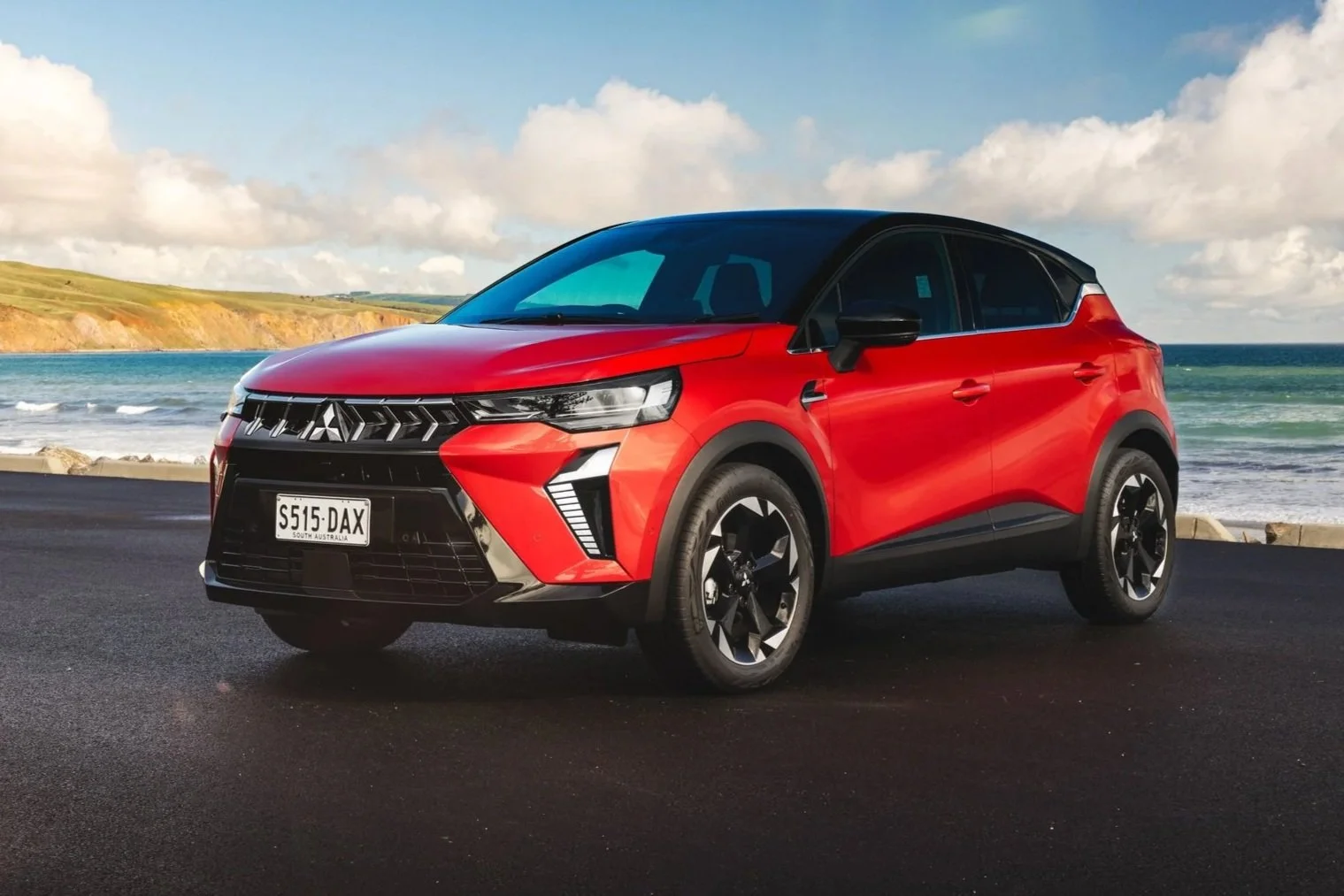




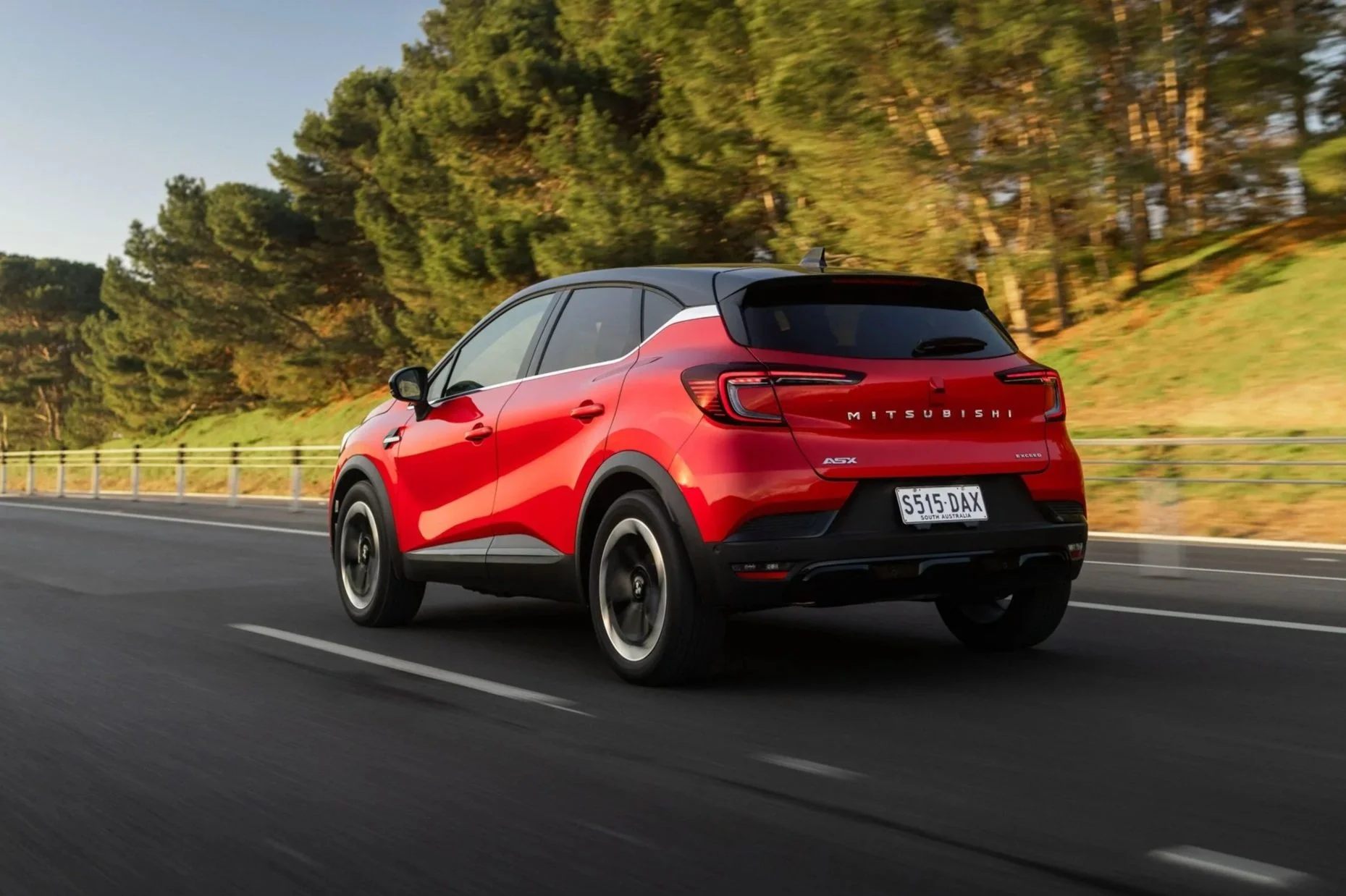

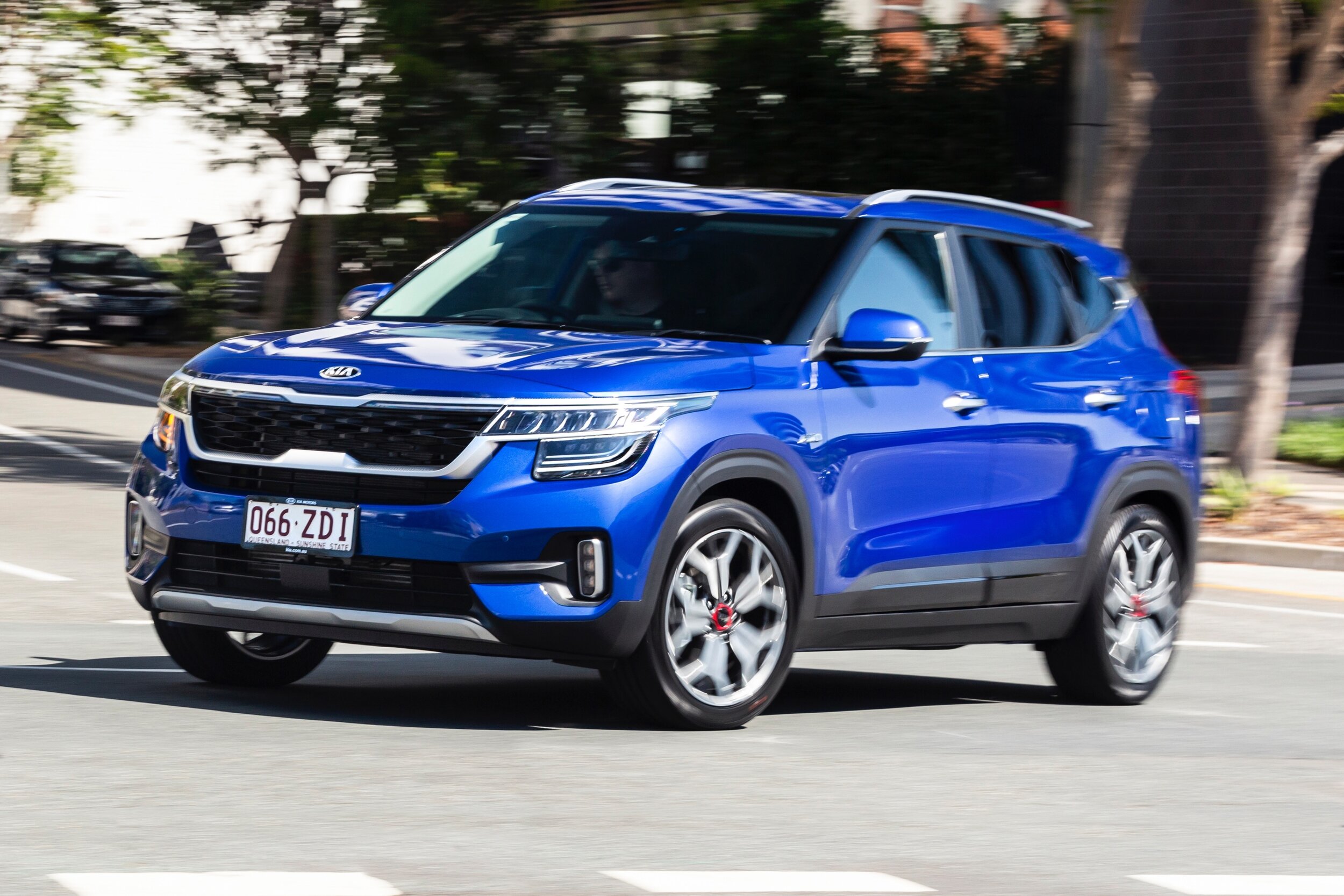
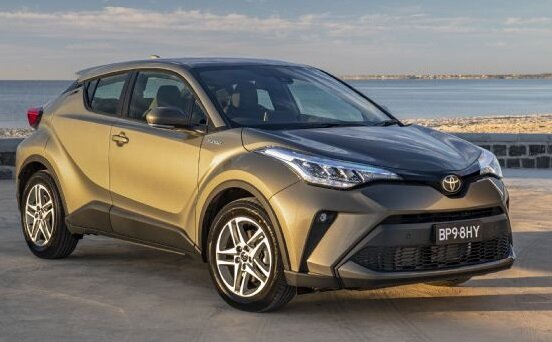

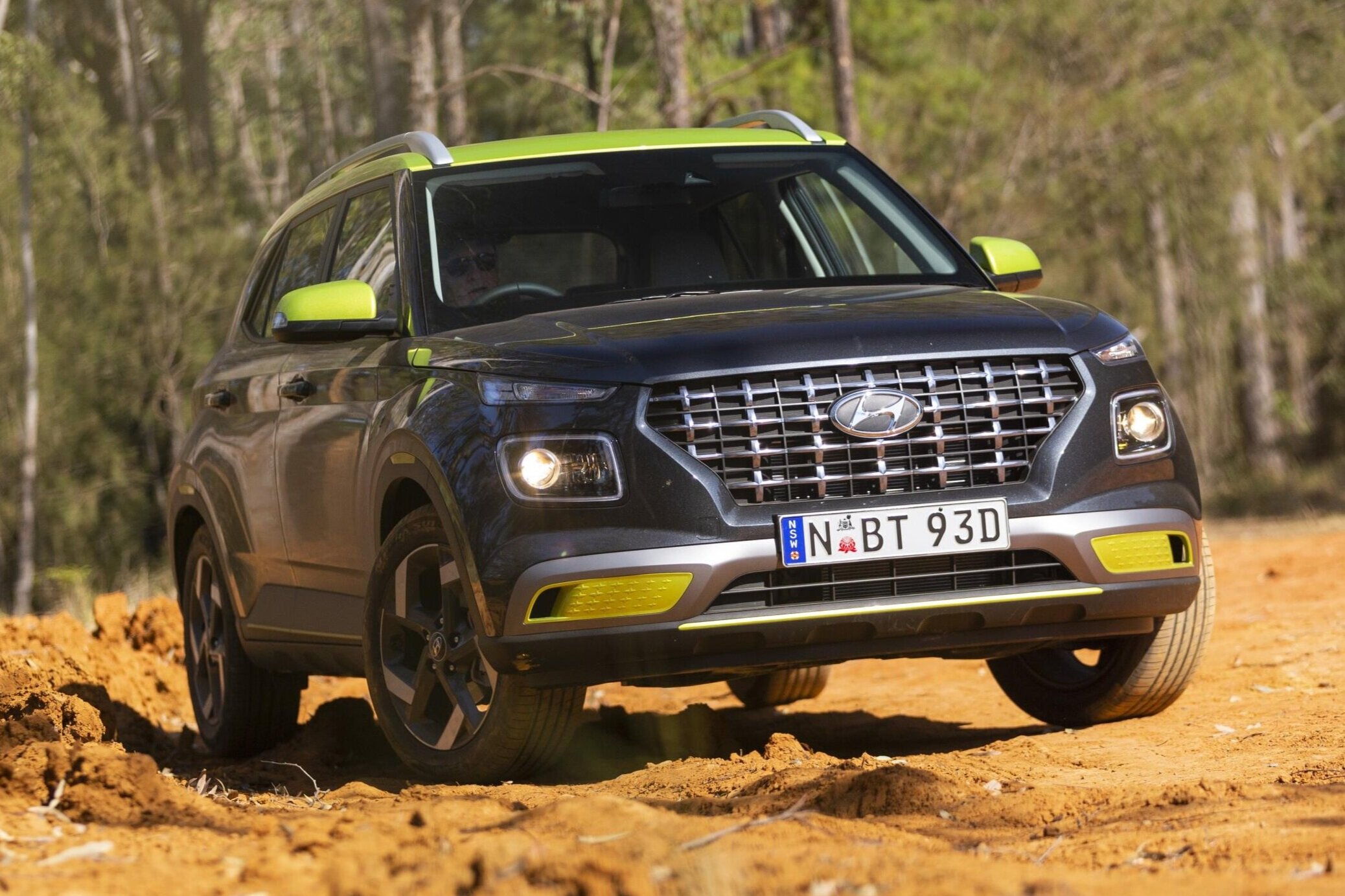
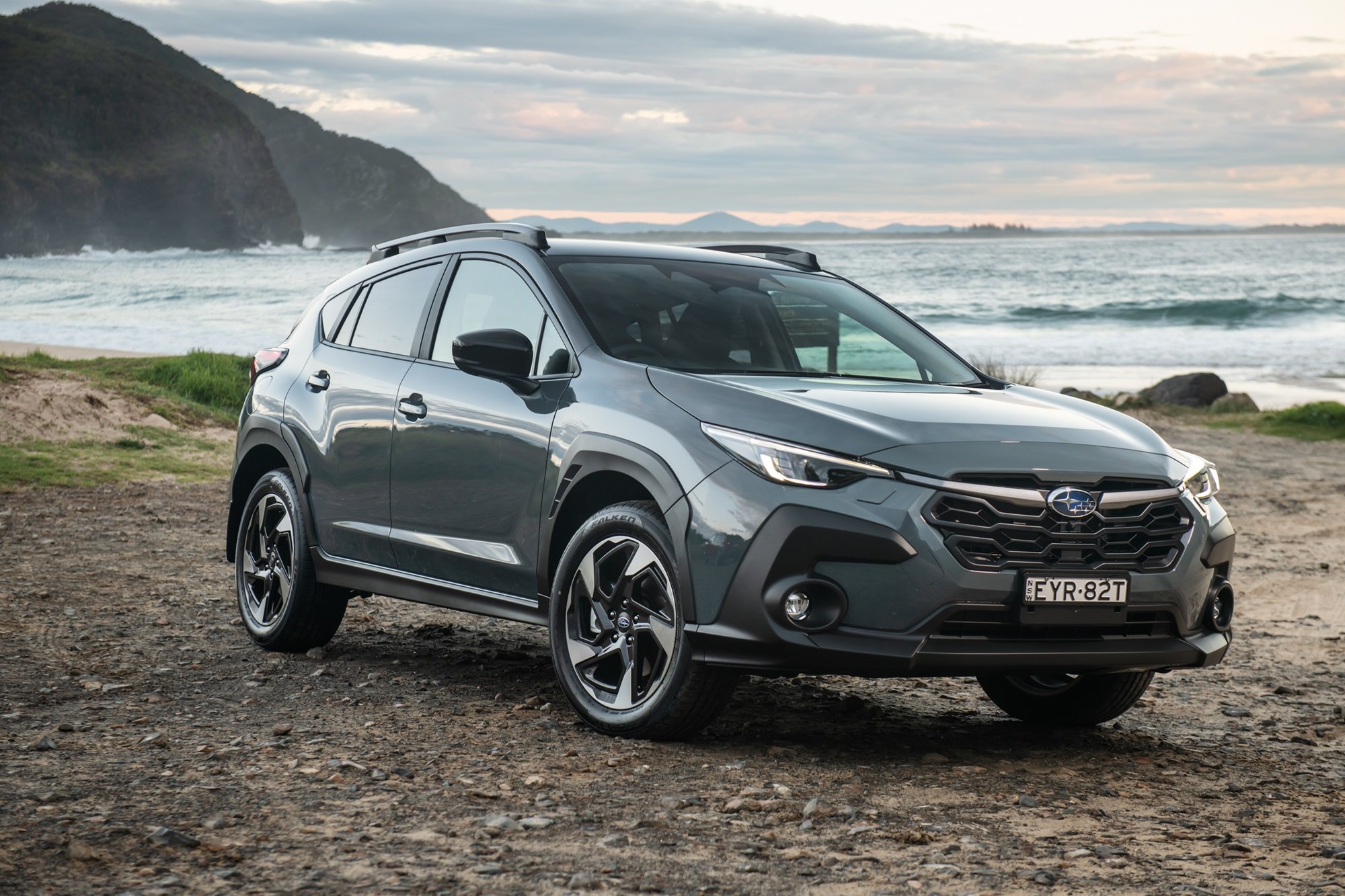


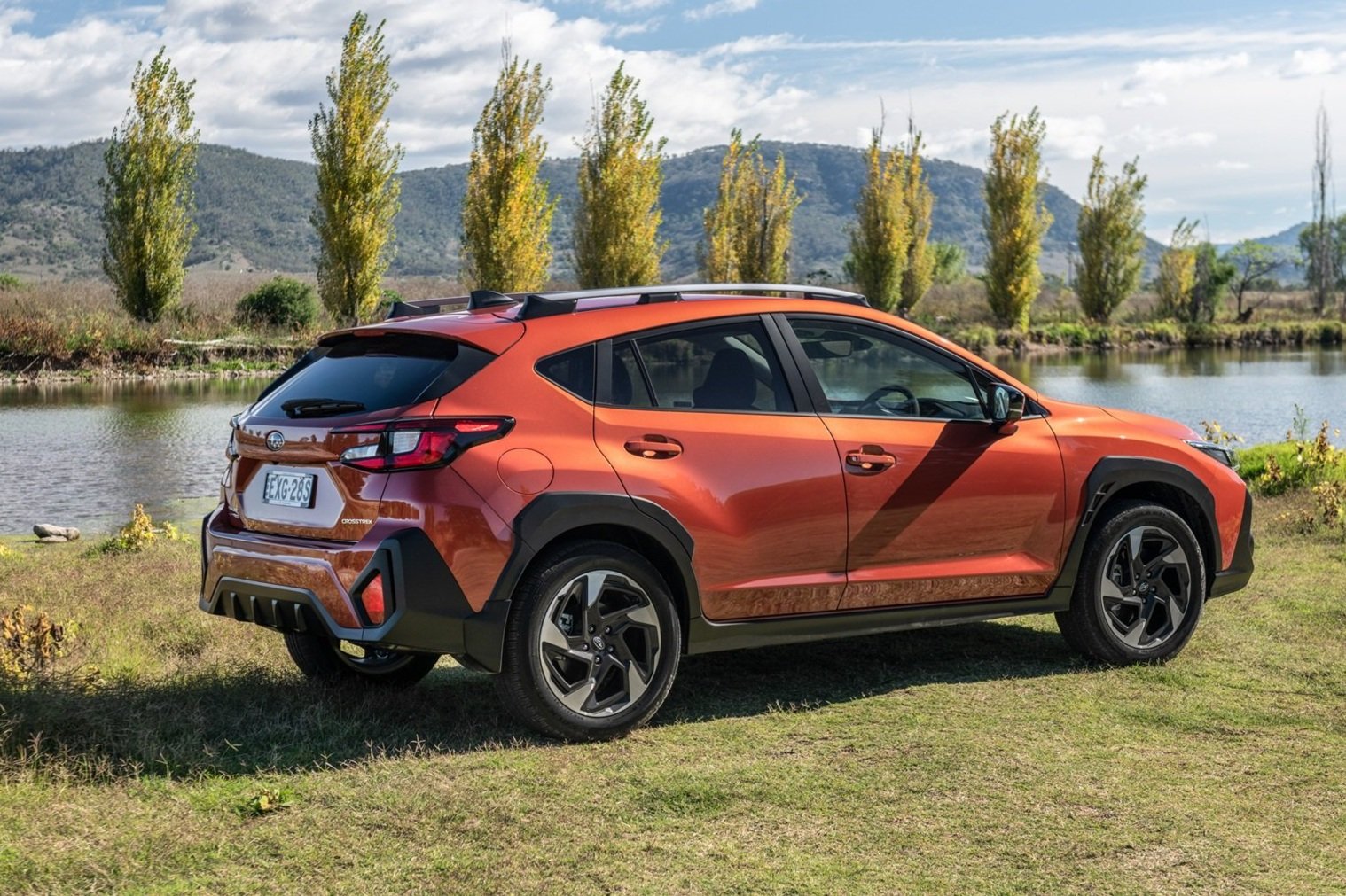


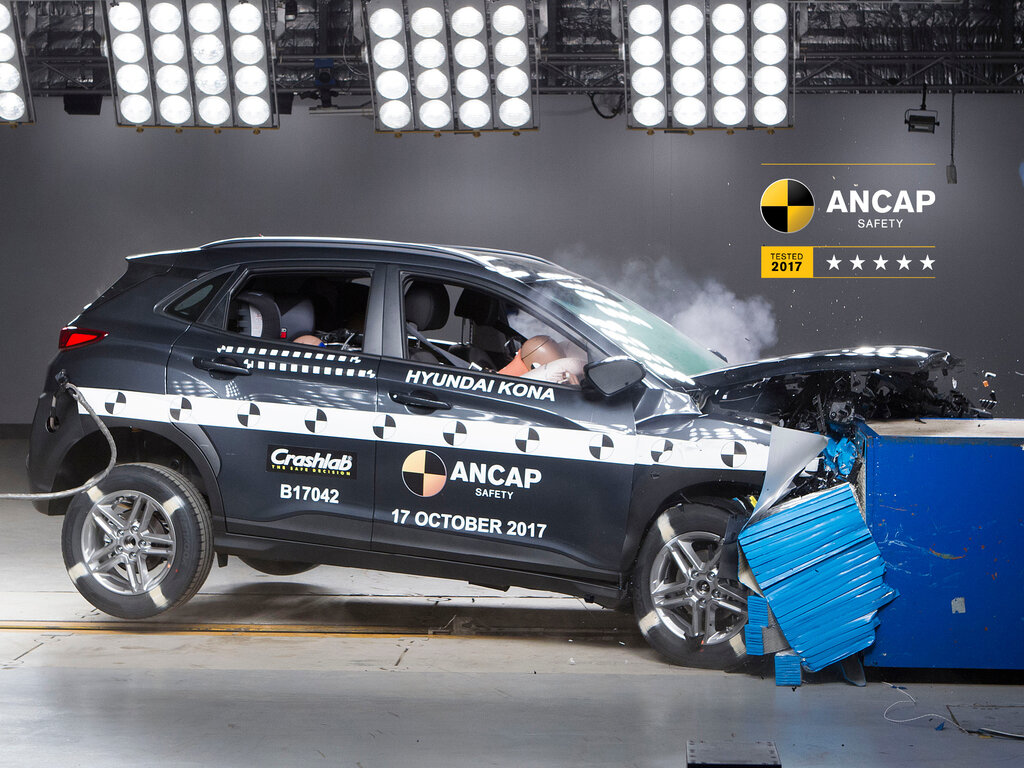

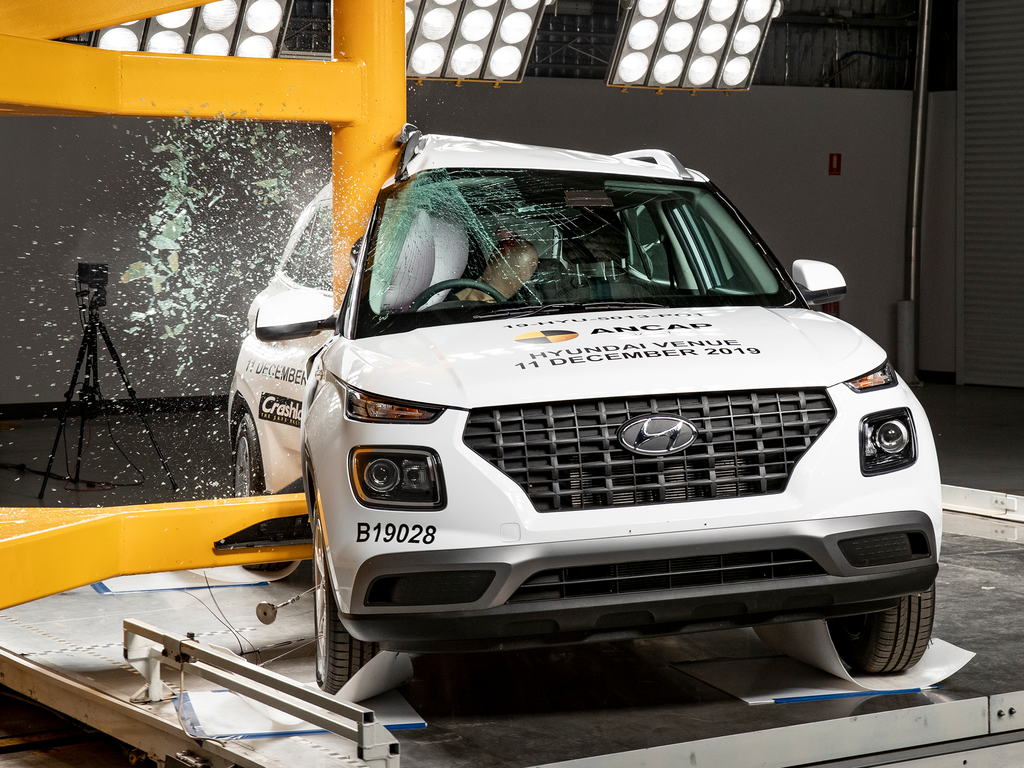













Toyota has raised the Corolla and called it a small SUV, one that offers reliability, practicality and even performance atop the range. Let’s see if there are any redeeming features that can justify the $50K price?